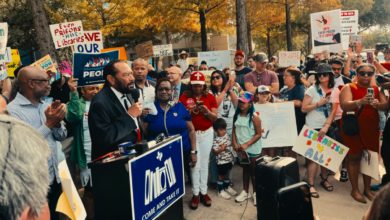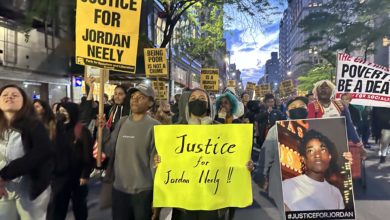The legal segregation of U.S. public schools was supposedly halted in 1954 by the landmark Brown v. Board of Education Supreme Court decision. But according to a January report released by the Civil Rights Project, school segregation is now at the highest level in four decades.
|
The 1954 Supreme Court decision concluded that Southern segregation was “inherently unequal” and did “irreversible” harm to Black students. In an education system segregated by race, poverty and language, most Black and Latino students do not receive opportunities equal to their white counterparts. The U.S. Department of Education states, “Poverty poses a serious challenge to children’s access to quality learning opportunities and their potential to succeed in school.”
Institutionalized racism has effectively replaced the Jim Crow laws of the post-Reconstruction period as the basis for continued segregation. Although there have been significant reforms, mostly won during the Civil Rights movement, these victories have been eroded by reactionary court decisions and racist political leadership from elected officials.
Employment statistics reinforce this point. A December 2008 Department of Labor study showed that 71 percent of white men and 34 percent of white teens were employed, while only 61 percent of Black men and 18 percent of Black teens were employed.
According to the Department of Education, 20 to 30 percent of Black, Latino, Indigenous and Pacific Islander families with children live in poverty. By comparison, that figure stands at around 10 percent in white households. For single-mother households, the gaps are even wider. These numbers have a direct bearing on the quality of education, because non-white families are less likely to live in the more affluent communities where the best public schools are located.
The connection between poverty and educational segregation is deeply alarming. The Department of Education’s Institute of Education Sciences conducted a study entitled “Status and Trends in the Education of Racial and Ethnic Minorities.” The study identified deep disparities between white students and students of oppressed communities in SAT scores, access to computers and, most notably, high school graduation rates.
A joint study by the Civil Rights Project at Harvard University and the Urban Institute showed that in 2001, 74.9 percent of white students graduated, but only 50.2 percent of Black students, 53 percent of Latino students and 51.1 percent of Native American students completed high school. Access to quality education will only be further eroded by the increase in school segregation.
Will Democrats turn the tide?
What can we expect of a Democratic White House on education? Arne Duncan, the newly appointed secretary of education, is the former CEO of Chicago Public Schools and has gained much criticism from the teachers in public schools there. George Schmidt, a Chicago teachers’ union leader and social activist, pointed out in a recent interview that Duncan has absolutely no teaching experience. When the union pressed the Chicago administration to have Duncan’s résumé reviewed under the Freedom of Information Act, they were denied this information on the grounds that this was “classified privileged personnel information.”
Duncan has been praised by Bush’s former Secretary of Education Margaret Spelling, and is a noted supporter of military academics—including military control of schools, as in the case of Chicago’s Military Academy. A supporter of the notorious No Child Left Behind Act, Duncan closed dozens of schools in Chicago’s oppressed neighborhoods for failing to meet standardized test scores. He has been a leader in the efforts to consolidate larger high schools and develop privatized charter schools.
Meanwhile, Black institutions have been blamed by politicians for furthering segregation and being counterproductive in the movement for education equality. The real blame rests with the system that does not meet the needs of Black students, making it a necessity to form all-Black educational institutions.
What can be done to reverse these trends and move towards greater educational equality? What is needed is an increase in affirmative action policies and putting pressure on local administrations. The people’s movement must refuse to accept reactionary court decisions and policies that erode successes, so that communities under attack have a means to fight back.
We need to reverse the trend of privatization in our education system and increase public ownership and governance over education. The end of formal Jim Crow segregation, which was a result of the mass movements of the 1960s and 1970s, was a giant step forward in the struggle against racism and for racial equality.
Many of the gains gained from that period have either been eliminated or significantly eroded. There has to be a clear understanding that racial equality is actually further away today than it has been in decades. As long as we live in a society that thrives on racism and uses it to further the exploitation of workers, all reform movements will be subject to constant attack.







